 In Part II of of our interview, we talked about the proliferation of pipe smoking information on the Internet, anecdotal evidence that pipe smoking is becoming more popular with younger adults, and Sykes was telling us what makes SmokingPipes.com unique from any other pipe and tobacco retail business. We learned about the rigorous process each pipe goes through including multiple inspections, and each pipe being individually photographed even if that make and model was photographed before. Each photo on the site represents the exact pipe you are getting.
In Part II of of our interview, we talked about the proliferation of pipe smoking information on the Internet, anecdotal evidence that pipe smoking is becoming more popular with younger adults, and Sykes was telling us what makes SmokingPipes.com unique from any other pipe and tobacco retail business. We learned about the rigorous process each pipe goes through including multiple inspections, and each pipe being individually photographed even if that make and model was photographed before. Each photo on the site represents the exact pipe you are getting.
Read Part II of the Sykes Wilford Interview Here … or Continue to Part III …
———————————–
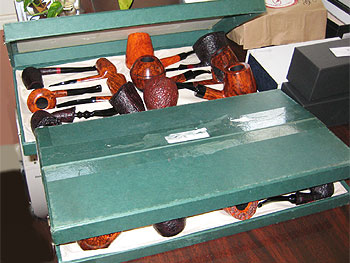
Sykes Wilford: We’re constantly trying to do things better. Some of this relates to pipes, and some of it is purely business related. How do we tighten the supply chain, how do we improve the customer experience on the website, how do we check our internal processes so that things happen more efficiently so the customer is served better?
On tobacco, how do we do things more efficiently so we can shrink our margins so we can offer better prices? How do we… I had a meeting in here yesterday afternoon with the regional IT guy from UPS and Melissa, our IT Manager, who you met earlier and we’re talking about address validation, Excel integration and data pushing here and there between us and UPS in order to tighten that link in our logistics. And that’s obviously something simple that we do.
Kevin: Is there anything else that makes SmokingPipes.com different?
Sykes: Well, in some obvious ways. I mean, there’s a vastness of selection. There are other places that sell or that carry, on their websites, as many Peterson’s as we do, but we also have at any given time, about 500 estate pipes on the website. There’s a vastness there that doesn’t exist elsewhere.
Additionally, the biggest difference, perhaps the single biggest difference is that we update the website with, on average, 150 pipes, twice a week. 300 pipes a week, so 1,300 to 1,350 a month and its constant. There is always new stuff. Yes, we only have about 1,500 pipes on the site, but next month it’ll be a totally different 1,500 pipes from what we have right now.
Kevin: Estate pipes is a fancier way of saying pre-owned, which is a fancier way of saying used. My observation has been that most estate pipes are acquired on eBay auctions and you don’t typically have the opportunity to find them in a standard online store. However, you guys have a wide range of estate pipes available at SmokingPipes.com. How much of your business is accounted for by estate pipes and is there really any other place to get them besides SmokingPipes or on eBay?
Sykes: Not on this scale. There’s no other place. There are a couple of websites that do estate pipes and do it fairly well, but it’s on a much smaller scale. Then there’s eBay of course.

Kevin: So where do you fit into the estate pipe market?
Sykes: That’s a loaded question! (laughing). Obviously most estate pipe transactions are person to person or through eBay as a medium. Those that are handled by retailers, we are the largest by a few times over.
Rob Cooper (Coopersark),the PipeRack.com, and a couple of others do sell a fair number of estate pipes, but a fair number’s a much smaller number than what we do week in, week out.
What we have done in estate pipes is take pipes in and give them the SmokingPipes.com seal of approval. We will not sell a pipe that doesn’t meet our rigorous standards. If we discover any type of flaw, it goes in the “pipe science bin”, which we then use to test new cleaning methods and stuff.
We make sure the product’s that are on the website are cleaned to a very, very high standard.
Kevin: What’s the process you use for that?
Sykes: It’s very thorough. We clean the insides with alcohol, we ream the pipes, we soak and buff ebonite stems and buff all stems, we clean and buff the bowls. Most of the time is spent on things that are truly disgustingly nasty. I once pulled a staple out of a Charatan. It was just stuck up in the Charatan stem. There was a staple in there. Or things that are weird.
A lot of time, really old pipes need a lot of work, but we don’t top pipes; we don’t do anything to fundamentally alter pipes.
Kevin: You don’t top, what does that mean?
Sykes: A lot of pipe restoration involves taking sanding discs, getting under the surface of the pipe, and then re-staining the rim. We never do that. There are a lot of people who do. I don’t think it’s necessarily a bad thing, but we have decided to do less, rather than more.
What we will do in a situation like that where the rim’s really messed up, well, we’d just clean up the best we can and sell it that way or we wouldn’t sell it. But pulling just tar layers off of stuff, it can be time consuming. We figure it takes about 50-55 minutes per pipe on average. Obviously some are very quick.
Kevin: Could that be one of the reasons why you guys have become so big in the estate pipe market; that just the amount of effort required to prepare a pipe for sale many others are not willing to go through?
Sykes: I think that you could say that about everything we do. People have tried to get on weekly update schedules before and they don’t stay on them for more than two weeks because something takes priority, it takes discipline, it takes business processes, and it’s an awful lot of work.
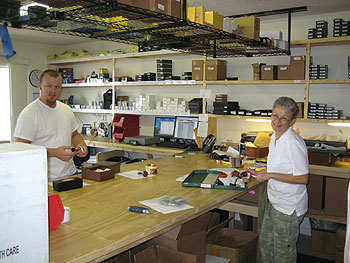
There are currently 25 employees at SmokingPipes.com. There are people that clean pipes all day, that’s all they do. People that describe pipes all day, that’s all they do. Take pictures of pipes all day, that’s all they do. In order to bring in new stuff every week, it’s constant work that you need dedicated people to be doing every day.
Kevin: How do you acquire estate pipes?
Sykes: All sorts of different ways. Most actually come as trades. Pipe smokers look at their collection and think; “I don’t like those ten”. They send those ten to us and they get credit towards something else they want. I’ve done that with my collection over the years.
Kevin: How does that work, value-wise on a trade?
Sykes: We offer 55% of what we expect to sell it for in trade. There’s some consignment places that will take smaller margins. With us there’s a level of cleanliness and a quality of execution that means that we can charge a little bit more than eBay because you don’t have to clean it and it’s been freshly restored. The pipe is ready to go and it’s beautiful, as opposed to possibly having mold growing around the bowl and staples in the stem. So we offer 55%, but the quality of the finished product is higher and the value end is higher. It’s a real convenience to people buying because they don’t have the equipment, expertise, time, or energy, and desire to clean this stuff up.
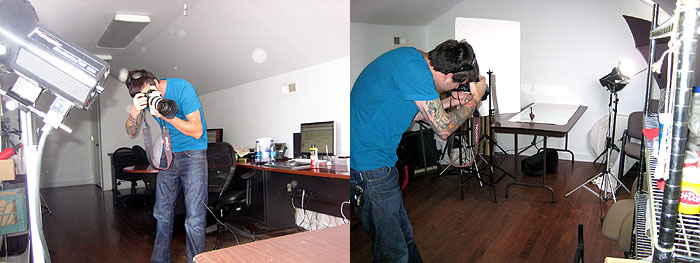
Can you sometimes get a Dunhill Shell 4102 from 2004 cheaper on eBay than you can from SmokingPipes.com? Absolutely. Do you know what’s going on inside of that pipe from eBay? No. Do you know what’s going on inside of the pipe from SmokingPipes.com? Absolutely. We have a pipe maker with an industrial design degree on staff that writes the condition statements of all the estate pipes.
Kevin: So it’s almost like being able to buy a new pipe for much less?
Sykes: It’s kind of like going to the Volkswagen dealership and getting a certified, pre-owned Volkswagen verses going to Bob’s Lot of Used Cars and maybe getting something that didn’t pass it’s Car-Fax Report.
Kevin: Are estate pipes still primarily an American phenomenon?
Sykes: Yes, is the short answer. For years I’ve heard people saying that Europeans, Germans, Japanese, etc., don’t buy estate pipes. While there aren’t any developed estate markets outside of the U.S., we do sell estates into other countries.
Kevin: Are there any general noteworthy trends that you’re seeing in the pipes and tobaccos market?
Sykes: Our business has grown tremendously in the past couple of years. We’ve seen much faster growth than we have during the prior three years.
Kevin: Do you think the overall market is growing?
Sykes: I don’t know. I wish I did. I hope it is. I suspect that it is, but I’m still not hearing that from everybody. There is more positive information than negative though.
Kevin: In pipe tobaccos, how important are new tobacco blends and how many do you see introduced in a year?
Sykes: This month we’re adding 32 tinned tobacco facings. This is a big month because we just came back from the Chicago show where a lot of new blends were introduced.
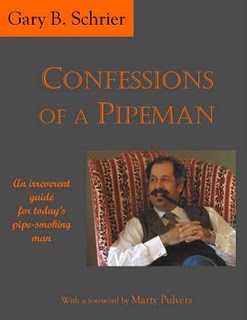
Kevin: Along the lines of a steady stream of new tobacco blends being introduced on a regular basis, I’d like to know your thoughts on something I read recently.
I was reading Gary Schrier’s book, “Confessions of a Pipeman”, (which I really enjoyed) and in Chapter 9, entitled “The Right Tobacco”, he asserts an interesting opinion about how many new tobacco blends are actually new.
He says that there are only so many types of tobacco leaves and only so many ways you can process them and blend them. He implies that nearly everything has been done already and that many of the new tobacco blends are not really new, and are more of a marketing scheme to sell more tobaccos. Those are not his exact words, but my interpretation of the statements on page 51 of his book.
What do you think of that?
Sykes: I love the book, and Gary’s awesome. We sell a bunch of his books and that one’s a lot of fun. There is a kernel of truth to what he said. It’s not totally absurd what he’s arguing. He’s saying you’ve got X number of different tobaccos that basically have these characteristics. You have palettes, the human palette is not as sophisticated as we would all like to pretend it is, and how many different combinations you can get out of that? How many people can actually tell the difference amongst them? That’s effectively what he’s arguing. It’s not a ridiculous thing to argue.
However, you’re not just taking different tobaccos that are blended together. You’ve got a vast number of different tobacco blending processes. When you’re taking the leaves to process, you don’t just slice up leaves into ribbon and that’s it. You can press it, slice it, and depending on how thick you slice it, how long you press it, and so on opens up more possibilities that will change what the blend turns into.
Even if it’s a ribbon cut, you’re still pressing it for a short time in order to slice it. You slice it and you get these long ribbons of tobacco. It’s not all together like a flake but you’re still doing something to it. So no matter what it is, you’re doing something to it. It doesn’t matter if the tobacco is non-aromatic, or aromatic, it doesn’t matter. There are perfectly normal additives that are added when you’re blending tobaccos.
Everybody uses different additives in order to achieve a set of results. Some of these are pleasant additives, some of these are unpleasant and it doesn’t make them all aromatics either. Everybody uses a little bit of sugar or a little bit of honey or a little bit of something when you’re processing tobacco because you have to.
You also have to use a little bit of, at the very least, something like a watered down vinegar and at the most something like propylene glycol. What they’re accomplishing is adding a little sweetness to bring out the other sweetness and flavors out of tobacco, or preserving the tobacco so that it doesn’t mold before it gets to the consumer.
There are a whole bunch of different decisions that go with that; what do you use, how do you use it and how will it change the character of the blend?
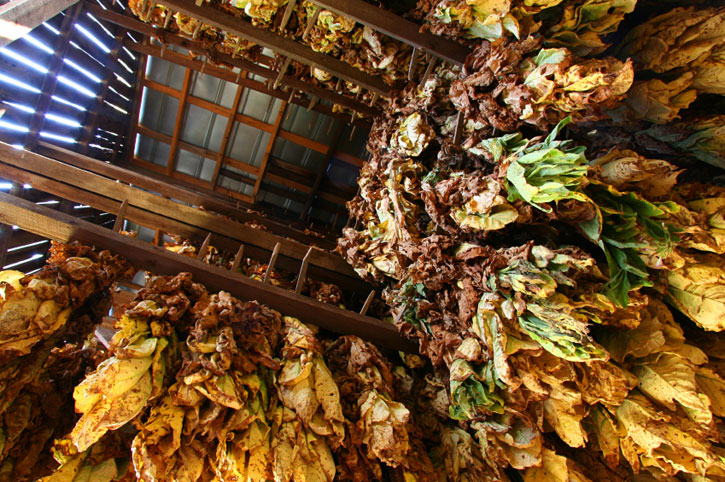
McClelland, for example is a very distinctive blending house and they make these extremely high quality tobaccos. Their blending is extremely good, and even though they have blends that are different from one another, McClelland has this distinctive quality taste. You can’t smoke a McClelland blend and think it came from Samuel Gawith, or Orlik, or even another American blender. That’s because of whatever decisions they’re making in terms of processing.
It’s not that those are good or bad decisions. You have to do these things. It’s not like one tobacco is better because it’s “pure”.
| People think; “I don’t want any flavor in my tobacco”. However, no one should think they don’t want any flavor in their tobacco because it’s gross. Everything we smoke is at least processed with a little bit of sugar or a little bit of honey or a little bit of liquorish or a little bit of something in order to bring the other flavors out. Even things that we think are totally not aromatics. |
Kevin: Speaking of which, as far as your sales show, which is more popular; English, or Aromatic tobaccos?
Sykes: I’m not sure because we haven’t broken it out that way. I think it’s an artificial division. I mean it’s not a totally artificial division. I smoke things like a Virginia, a Virginia/Perique, things I think of as not aromatics. There’s a gradation. There’s 1Q and BCA, and Stokkebye Peaches & Cream at one end of the spectrum.
Then there’s a straight Virginia with as little done to it as possible. Just pressed and topped slightly with sugar water or something very neutral at the other end of the spectrum.
So we don’t break things out quite like that. I would say probably 50/50, which makes us unusual since most of the pipe tobacco sold in the United States is aromatic.
Kevin: There are three specific brands of tobacco that the PipesMagazine.com members wanted me to ask you about to see if you could offer any insight to their availability – Dan Tobacco, Samuel Gawith and Dunhill.
Sykes: I can provide some insight on all of those.
Several Dan Tobacco blends recently arrived in our warehouse and they are available on our site. As far as Samuel Gawith goes, they’ve become enormously popular. The popularity of Samuel Gawith has just exploded in the last few years worldwide and they have a really small factory with really old machinery and they can’t grow production without destroying what makes it special. A container comes into the United States (I don’t know when the next one’s coming) and we buy as much as we can out of the container. It gets put on pallets and then we turn around and put it in little tiny boxes and it’s all gone in about five days, sometimes only three days. There’s all this pent up demand for it and there’s no way Samuel Gawith can make enough and that’s what happens.
So that is the situation with Samuel Gawith. I don’t know what the problem was with Dan Tobacco, but I understand it should be getting better soon.
Kevin: How about Dunhill?
Sykes: Here’s my read on the Dunhill situation. I’m pretty sure BAT [British American Tobacco] owns the rights to the Dunhill pipe tobacco brand.
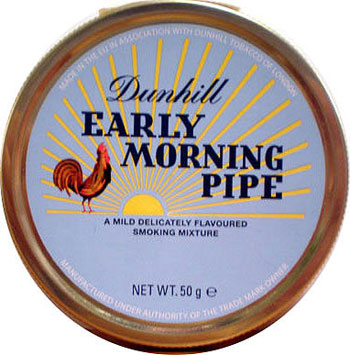 |
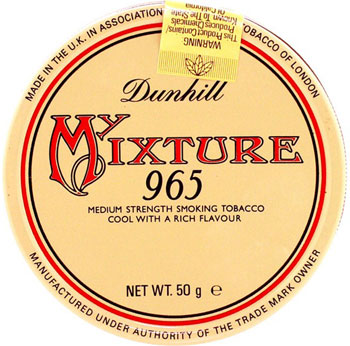 |
They used to be made in Belfast by Murray’s which was owned by BAT and sold through Lane in the United States for years. Lane’s distribution ceased to be and they moved all of that to Conwood in Kentucky. They are primarily a moist snuff company and they distributed Dunhill Tobaccos for a while.
It went to Conwood because they are owned by Swedish Match, which is owned by British American Tobacco. Conwood said “this is not worth our time and effort” and stopped doing it. You have to realize that BAT has billions of dollars in sales and it’s a huge company. [Editor’s note: BAT’s annual sales, roughly translated to U.S. Dollars is about $21 billion. Source: BAT 2009 Annual Report stating £14,208 million.]
Even a really big, important brand like Dunhill in the grand scheme of big business like BAT’s is miniscule. Trying to get someone at BAT to make a decision and getting Dunhill to a place that fits in their rather twisted corporate minds; because they don’t want it to end up in a subsidiary of a competitor … They want to place it with a subsidiary of something they own.
In the meantime, the Belfast factory closed and all that production went to Orlik in Denmark. It went to Orlik in Denmark because BAT owns half of Scandinavian Tobacco, which in turn owns Orlik. So there’s all this big tobacco business incestuousness, and they don’t know what to do with this one little tobacco brand. From their perspective it’s a little tobacco brand.
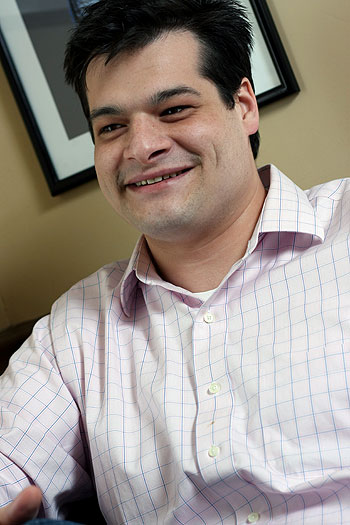
Kevin: Basically, the company that owns the rights to it is too big to have it be a priority?
Sykes: Exactly. I think it’s just not a priority. Do I think it will get fixed at some point? Sure. Maybe there will be a pipe smoker at BAT that can make a decision, or at least someone will make the right decision at BAT.
Kevin: Okay, so you’re 29 years old, actually turning 30 at the end of this month, and in the last 10 years you’ve developed your company into one of the dominant providers of pipes and tobaccos. Where do you see the market going in the next five to ten years? Where do you see your company in that time?
Sykes: Wow, I wish I knew the answer to this question. I mean we have plans; we have one year, five year plans, like any responsible business, but there are a few things that are unknown. The “Known-Unknowns” to quote Don Rumsfeld. [Former U.S. Secretary of Defense under President George W. Bush from 2001 to 2006]. The Known-Unknowns are the regulatory environment … the entire industry is worried about the regulatory environment. That’s just a big thing that hangs out there unknown.
Another known-unknown is a little bit more positive. Right now the pipe smoker market is very small but we’re seeing this increase in younger smokers. Is this the vanguard of a trend? Are we going to see something in pipes? … maybe not like the cigar boom, but it doesn’t take much to take pipes from being very tiny to very tiny times two or times three and where will those pipes be made?
If something like that is indeed happening in the United States, that would be a radical game changer for everybody in the pipe world; from us to pipe makers to people like you Kevin, for all of us in the pipe world. That would be awesome. I mean how cool would that be if pipes were that “in”? That would be great for everybody. Those are the big “wow, how do we really plan if these things could change everything?”
We project our numbers and we do the responsible thing because you know the bank likes us to, and we’re grown-ups. At the same time when I’m honest about prospects; five years, ten years down the road … Those are time horizons where there’s so much opportunity for unpredictable things to happen and it’s really hard for me to look that far down the road. I can look at the next year down the road and work extremely hard right now. The business is going very well and we’re working very hard to improve the website and quality of service we provide right now.
I hope that a year from now we’ll be doing better and smokingpipes.com will be stronger and it’ll be great for us and for customers and for everybody but five years down the road who knows?
Kevin: Alright, so I have to end with the obligatory question, like in the cigar world it’s “cello on or cello off?” but we’re talking pipes, so is it straight or bent? Personal preference?
Sykes: Alright let me see here … [looks at personal pipe collection racks, counting under his breath] … I’d say about 50/50 for me personally.
We sell probably a few more bent pipes than straight pipes but sometimes a distinction has to be made. How do you compare a little quarter bent apple with a wild free hand giant bent thing? It’s kind of tough to stick those in the same basket.
Kevin: Clearly, pipes are a true love for you. We’ve been talking about them non-stop for an entire day, and I know you could keep going. I thank you for your time and wish SmokingPipes.com a Happy 10th Anniversary.
Sykes: Thank you sir, this has been a lot of fun.
Sykes Wilford Interview Part I
Sykes Wilford Interview Part II










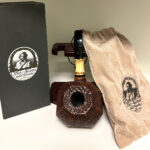

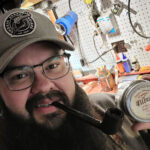






I loved all three parts of this interview. Kevin asked insightful and interesting questions, and Sykes gave insightful and interesting answers.
I have watched smokingpipes.com grow from a small operation to a large one, and I have heard nothing but praise for its customer service over the years. Personally, I have always been happy with every transaction.
As for the collector market growing from “very tiny to very tiny times two or times three,” that would be awesome. The fact that Sykes has managed his business to continue growing without considering that possibility — or without relying on it — shows what a brilliant businessman he is.
I’m a young-adult, just about to turn 20. I’ve been smoking myself a pipe for about, oh, seven months now, and in this time I’ve turned two friends into pipe smokers. More anecdotal evidence, huzzah!
Thank you so much Rick! I’m honored that you were one of the first to read and comment on the article.
Keep it going Collin! That is great news!
Thanks Rick! I certainly appreciate the kudos. Glad you liked the piece. When I read it, I thought I sounded like an eight-year-old after four cans of Mountain Dew, but at least I sound as enthusiastic as I feel!
Oh, and I love the irony that Dan Tobacco was in stock as of the interview, but now again faces the same shortages that prompted the question…I’m back to saying that I hope we have it back in stock soon!
Thanks for the feature article. The questions were exactly along the lines of my interests, and Wilford’s responses were refreshingly candid.
This was a great 3 Part interview and article!
It is filled with tons of information and is very entertaining. Thanks for taking the time to have the interview Sykes!
———-
Collin,
That is great to hear that you are getting some of your younger friends involved in the great hobby of pipe smoking, keep it up!
Great job Kevin! Being a previous pipe shop owner from the 80’s I have watched Smoking Pipes grow over the years. It’s been my pleasure to meet and talk to Sykes and much of his staff and I am impressed by all. Thanks to people like Kevin, Bob and Sykes, I am very optimistic about the future of our hobby and enjoyment. My thanks to all.